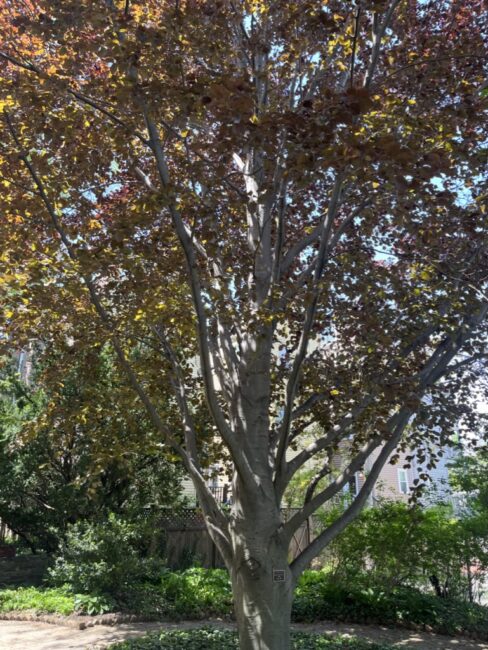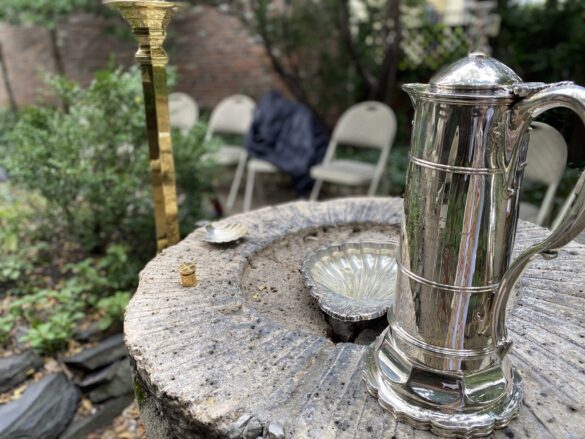Savvy readers may know that our readings in worship follow a cycle called the “Revised Common Lectionary,” which tries to read through much of the Bible over the course of three years of Sunday mornings. Each year is assigned a different gospel: Year A is Matthew, Year B is Mark, and Year C is Luke.
Even savvier readers may notice that this leaves out John, and indeed the Gospel of John doesn’t have its own dedicated year in the lectionary; instead, bits of John are squeezed into the holiday seasons of every year, and John also features prominently in the year of Mark, which is otherwise the shortest gospel.
All of which is to say: Given that we’ll be spending most of the rest of 2024 reading through the Gospel of Mark (with the exception of a long excursus through John 6 in late summer), I thought I’d say a few words about the gospel as a whole right now, as a way of framing what we’ll be reading for the next few months.
People often call the Gospel of Mark “a passion story with an introduction,” and this is about half true. Mark is the shortest of the four gospel stories in our New Testament canon, and so its story of the Passion takes up relatively more of the text than in the others: Jesus’ ministry in Galilee occupies chapters 1-9, his ministry in Judea chapter 10, and then the story of his trial, crucifixion, and death chapters 11-15. Mark lacks much of the teaching material you’ll find in Jesus’ sermons in Matthew and Luke, and even the familiar stories of Jesus’ birth and childhood—in Mark, Jesus emerges fully grown, travels around Galilee for a year, and then goes to die.
In the early centuries of the church, Mark was often seen as “lacking” in some way, a book that was canonical and inspired but essentially an abbreviation of Matthew, with much of Jesus’ teaching taken out. Modern scholars tend to reverse the story of those two books; while ancient authors tended to believe that Matthew was written first, and abbreviated into Mark, modern scholars typically believe Mark to have been the earliest of the gospels, to which additional material was added and rearranged to form the Gospels of Matthew and Luke.
In any case, the Gospel of Mark is worth reading on its own. It confronts the reader with the immediacy of the gospel. “Immediately,” in fact, is Mark-the-Narrator’s favorite word: in the first chapter alone, Jesus is baptized, and upon emerging from the water “immediately he saw the heavens being torn open… and the Spirit immediately drove him out into the wilderness.” (Mark 1:10, 12) He calls Simon and Andrew and “immediately they left their nets and followed him,” and at the next boat down the beach he sees James and John “and immediately he called them.” (Mark 1:18, 20) If Mark were a movie, it would be an action movie, all quick cuts and special effects.
And about those special effects. In Matthew and Luke, Jesus is a preacher: he gives sermons full of parables and stories. In John, he’s an esoteric teacher, unveiling theological truths. In Mark, Jesus is Jesus Christ, Demon-Fighter. Of course, Jesus does all of these things in all of the gospels, and many more things besides, but the inclusion of different quantities of material from each category gives each gospel a distinct feel.
Andrew McGowan, a scholar of the early church and priest (and my former seminary dean!), writes:
We may be put off by the symbolic language of the demonic, or miss the point by imagining it refers to arcane supernatural matters far from our experience. In the world of the Gospels the forces of good and evil are both metaphysical and concrete; they are manifest in disease, oppression, and suffering of all kinds…
Jesus has not really begun teaching yet. This was not the basis of the movement around him for Mark, because teaching is something that Jesus only subsequently does (see chapter 4), for and with his followers, to provide formation for the movement he has already begun. The reason people are with him is his demonstrated willingness to name and confront the powers of evil, both as manifested supernaturally and in the political structures of the day—if indeed it is right to separate these at all. His movement is coalescing.
You could almost think of the Gospel of Mark as the inspiration for the storytelling genre of the video game or fantasy series. Starting from his home town, Jesus battles against a series of bosses, each one tougher than the last, as he continues along his quest. The story proceeds in a series of episodes, one struggle immediately following another. But this series of adventures isn’t merely the “introduction” to the passion story: it’s a series of battles in the same war.
Jesus’ ultimate enemy is not the Pharisees. It’s not the Herodians. It’s not even the Romans. Jesus’ ultimate enemy is death itself, and every small stand he takes along the way is a stand against some part of the forces of power, evil, and death in this world.
In this Sunday’s Gospel, Jesus is accused of using the power of Satan to cast out demons; surely only someone could battle demons so effectively by channeling the power of an even greater demon! Jesus replies, “How can Satan cast out Satan?” Evil is his enemy, not his tool. And then he continues: “No one can enter a strong man’s house and plunder his property without first tying up the strong man; then indeed, the house can be plundered.” (Mark 3:27)
We live in the “strong man’s house.” We live in a world in which the powers of evil and death hold sway. And yet we also live in a world after Jesus’ death and resurrection, a world in which the Strong One has been tied up; dangerous, still, but on the way to defeat.
You may be accustomed to hearing the Gospels and listening for Jesus to teach you or to tell you something, to offer some spiritual wisdom that you might be able to apply to you life. If that’s the case, then over the next few months as we listen to Jesus’ words but hear a lot about his deeds, I’d invite you to consider: What is Jesus doing in the story this week? What is Jesus battling against? What aspect of the Strong One, the power of evil that rules this world, is Jesus “tying up” this week? And if it’s tied up, then — How am I being set free?









